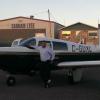Retracting flaps after touchdown
-
Members Online
- TravelingIA98
- Sabremech
- Brian2034
- Utah20Gflyer
- PilotX
- Colbyw
- FlyingDude
- Rwsavory
- Jeph357
- Edward Ferguson
- Tmack201
- 201Mooniac
- hubcap
- Schllc
- exM20K
- atpdave
- M20E for me
- Bart Chilcott
- takair
- Scott Ashton
- Rmnpilot
- Patrick Horan
- MooneyModified
- BrettC113
- ElkoRandy20J
- raymondscott0321
- Grant_Waite
- Echo
- varlajo
- N201MKTurbo
- 1967 427
- EKoS
- shawn-201zb
- eman1200


Recommended Posts
Join the conversation
You can post now and register later. If you have an account, sign in now to post with your account.